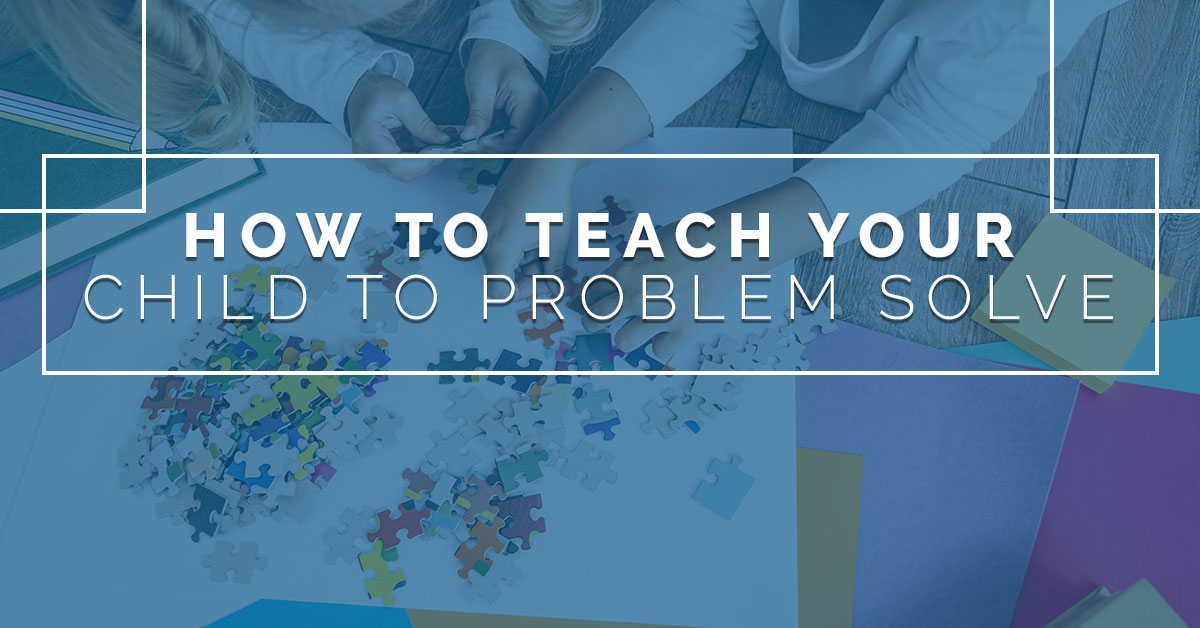
As kids grow up, one of the most important lessons they can learn is how to effectively solve problems. Throughout every piece of our lives, we encounter problems that need to be handled, often times quickly. Everything from the tiniest of issues to big situations have to be dealt with as they come, so showing your little one effective problem-solving skills is beneficial from childhood to adulthood. With that in mind, we have compiled some of the best ways that you can teach your child how to be an effective problem solver. When these strategies are used in conjunction with your child’s teacher and how they pass along problem-solving skills, your child will be able to tackle whatever issue they may run into.
Give them space
One of the ways you can stunt your child’s problem-solving skills is by swooping in at the first sign of trouble to fix the issue for them. Letting your child tackle a problem on their own will help give them the confidence they need to manage stress and difficult situations in the future. While it’s good to give them the support they need to make those decisions, it’s important you refrain from taking control away from them. When they don’t have control over the situation, they are more likely to feel overwhelmed when a problem presents itself. That will result in an overreliance on your assistance that can create a large burden on yourself, as you will shoulder your child’s problems as well as your own. Avoid being a “helicopter parent” and show your child that with knowledge and hard work, nothing is insurmountable.
Encourage creative playtime
There are many ways that kids can solve problems, especially when it comes to playing around. Even if it doesn’t seem like it, being creative works those problem-solving skills a great deal. Utilizing imagination to create a story or situation for their action figures or dolls to interact in puts them into situations where they will be solving problems in a new way. They will invent problems for their toys which they then need to come up with fun or interesting ways to handle on their own.
Even if they aren’t formulating an elaborate plan for how Spider-Man has to save the day, they could be engaging their problem-solving skills in other ways. That can be playing with wooden blocks or building a Lego kit while following the instructions. Even with a regimented form of creative play, problems can arise that will need to be handled in order to complete the project. Encourage your child to engage in creative playtime that keeps their imagination working and you’ll see the results. After all, solving a tough problem can be a big reward on its own.
Create a roadblock for them to overcome
As a contrast to actively solving problems for your child, you can present them with a reasonable problem that they need to overcome. Make it a problem with a solution that is attainable and provide them with as much information about the issue as possible. When they have information about the problem they’re attempting to take on, they will be better equipped to handle the issue. This will also prepare them for critical thinking that is required to overcome obstacles throughout their life, as they will have practice under their belt and the confidence that comes with achievement.
Present multiple possible solutions
Take any opportunity that you can to facilitate decision making for your child. When you present your child with multiple options to solve a problem or answer a question, it will ensure they do not avoid tough decisions. It is especially important that you do not explicitly state that there is one right answer that isn’t negotiable. Show your child there is more than one way to complete a task, address an issue, or find a solution to a problem. When they see that there are many ways to get things done, it will help them think outside the box with future issues they encounter. That makes them less likely to give up when there isn’t a clear solution put in front of them.
Make problem-solving a fun activity at home
Problems come up every day, in everyone’s life. Instead of treating a problem like something to be dreaded, make overcoming that difficulty a fun situation. When you approach problem-solving with a positive outlook, you not only show your child that problems aren’t something to be afraid of, you also teach them effective coping mechanisms when life gets tough.
Read stories about problem-solving together
There are many wonderful books that both children and adults enjoy that feature problem-solving at their heart. For instance, one of the most popular book series of all time, Harry Potter, constantly presents big issues for the heroes to overcome. Throughout the series, there are many examples of creative thinking and active problem solving are presented. When children see examples like this in literature, it shows them how problems can be handled, how to think about those problems creatively, and how they can achieve things they didn’t previously think were possible with some hard work and ingenuity.
Work on some do-it-yourself projects together
Even if you don’t consider yourself all that handy, you can tackle a tricky project together with your child. When you become an active learner alongside your child, you are sharing in a journey together. Look up YouTube videos or How To books to see how you can build something, paint something, or cook something together. Your child will cherish this moment as a moment where you are on the same level together. Even if your experience level is higher for a certain project, tackling something that is a little more difficult for you will be a great learning experience for the both of you.
Teach them the basic steps of solving a problem
Every problem can be broken down into manageable steps that can make even the toughest issues look far easier to accomplish than they would if looked at as a whole. First, identify the issue at hand. Then, break it into smaller tasks to be handled, one by one. Essentially, you are making a recipe or instruction booklet for how you can solve the issue step by step. Some examples of problems you can break into smaller parts for your child are:
- Homework isn’t done
- Breakfast hasn’t been eaten
- Teeth haven’t been brushed
- Lunch isn’t packed
- Their backpack isn’t ready for school
All of those issues can be broken down into separate steps that can be handled one at a time until the problem has been solved. One of the biggest things that can create anxiety regarding decisions or problem-solving is when the problem itself seems too large to handle.
Allow for failure
As a parent, it can be tough to stand by and watch your child fail at a task. It’s easy to want to jump in and help them out as much as you can. However, when it is safe to do it, let them fail. There is no better teacher in all of life than failure. When we try something and don’t succeed, we’re able to look at the situation, see what we did wrong, and make adjustments. Failure can be scary, but if you make your child fear failure, they will lose the confidence needed to accomplish great things. You can’t know what it means to succeed if you don’t lose sometimes. Show your child the value of failure by providing examples of successful people that had to fail a lot before they succeeded, such as Thomas Edison.
Problem-solving comes in handy for everyone, of every age. Teaching your child how to effectively problem solve, learn from mistakes, and think creatively will make them a more well-rounded individual. Challenge them and show them ways to overcome seemingly insurmountable roadblocks to see them flourish.

At Rebounderz in Rohnert Park, we love to see kids being creative. Whether they’re working out their imagination in our safe trampoline park or they’re utilizing their problem-solving skills in the Ninja Warrior course, you’ll see them thrive here. We hope to see you soon!
 Get Tickets Now!
Get Tickets Now!
 Sign Up Now!
Sign Up Now!



 Apr 11, 2018
Apr 11, 2018 

